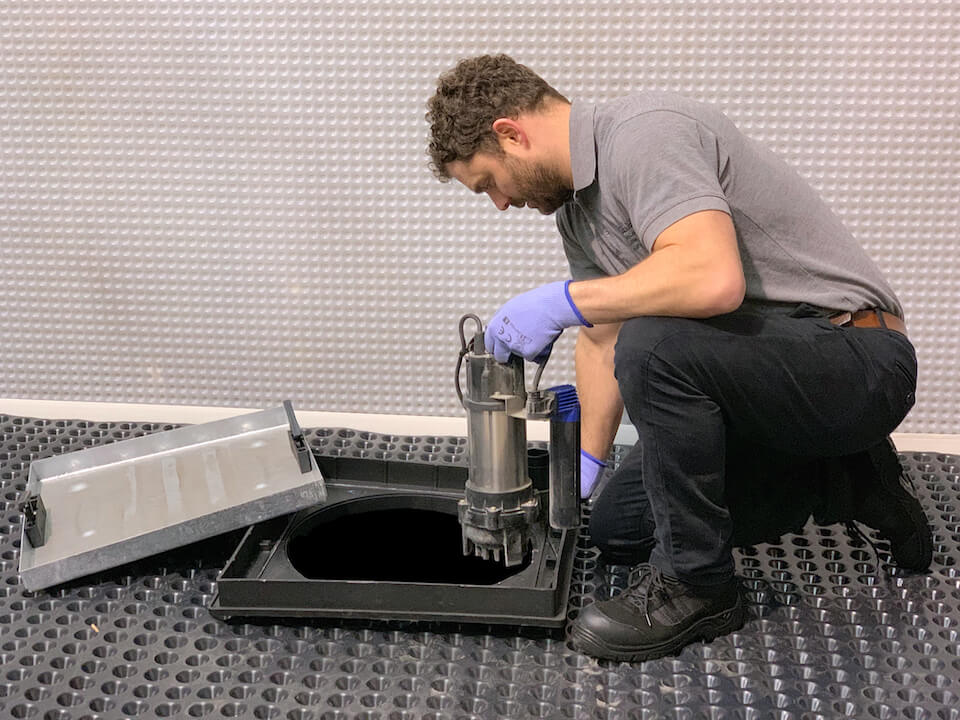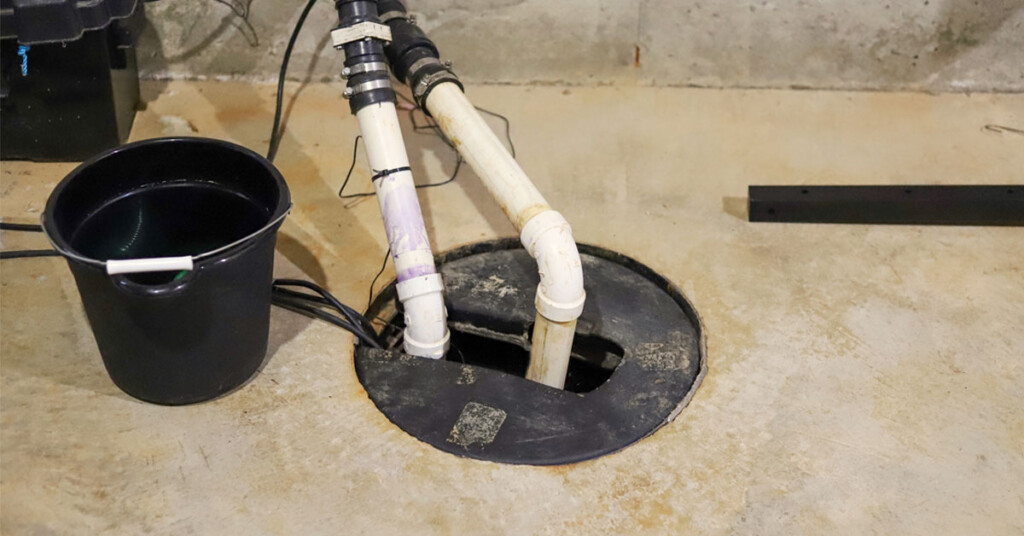Nearly everybody maintains their unique notions when it comes to Cleaning & Maintenance Tips for Your Home's Sump Pump.

Sump pumps are crucial parts in several homes, specifically in areas prone to flooding or too much moisture. They assist protect against water damage by successfully eliminating excess water from basements or crawl spaces. However, like any other device, sump pumps call for routine maintenance to ensure they work efficiently when needed the most. Cleaning your sump pump is an essential part of its upkeep, and understanding how to do it effectively can save you from costly fixings and possible calamities.
Introduction
Preserving a tidy sump pump is essential for its correct performance and long life. Overlooking this crucial task can result in blockages, breakdowns, and inevitably, water damages to your home. For that reason, finding out how to clean a sump pump is crucial for homeowners who count on these devices to keep their basements dry and protected.
Indicators of a Dirty Sump Pump
Recognizing when your sump pump requires cleaning is essential for avoiding prospective malfunctions. Some common indications that indicate an unclean sump pump consist of weird noises throughout procedure, decreased water flow, and visible particles in the pit. If you notice any of these signs and symptoms, it's necessary to clean your sump pump quickly to prevent any type of further issues.
Planning for Cleaning
Before you begin cleaning your sump pump, it's necessary to take some security precautions. Beginning by shutting down the power to the pump to prevent any type of electrical mishaps. In addition, use ideal safety equipment, such as handwear covers and safety glasses, to secure yourself from dirt, debris, and possible microorganisms.
Understanding the Sump Pump
Prior to diving right into the cleansing procedure, it's important to have a basic understanding of how a sump pump works. Normally installed in a pit or basin below the basement floor, a sump pump consists of several crucial parts, including a pump, a float button, and a discharge pipeline. When water gathers in the pit, the float switch activates the pump, which after that pumps the water out via the discharge pipe, far from the building's foundation.
Detailed Guide to Cleansing a Sump Pump
Shutting Off the Power
Begin by detaching the power supply to the sump pump to stop any type of crashes while cleaning.
Looking For Appropriate Performance
Before re-installing the pump, do a quick test to make certain that the float switch activates the pump correctly. Pour some water into the sump pit and observe the pump's operation. If every little thing is functioning correctly, you can rebuild the pump and reconnect the power supply.
Getting Rid Of Debris and Dirt
Use a container or a scoop to get rid of any noticeable debris, dust, or sediment from the sump pit. Dispose of the debris correctly to stop it from obstructing the pump or the discharge pipe.
Cleansing the Pump and Drift Switch
When the pit is free from debris, meticulously remove the pump from the pit. Inspect the pump and the float switch for any indications of damage or wear. Utilize a soft brush or towel to cleanse the surface areas and eliminate any type of accumulated grime.
Purging the System
After cleaning up the pump and float switch, purge the sump pit with clean water to get rid of any continuing to be dirt or sediment. This will certainly help guarantee that the pump operates efficiently and efficiently.
Maintenance Tips to Keep Your Sump Pump Clean
In addition to periodic cleansing, there are numerous upkeep suggestions you can comply with to maintain your sump pump in optimum problem:
Conclusion
Cleansing your sump pump is an essential element of its maintenance and makes sure that it operates successfully when you require it the most. By adhering to the steps laid out in this guide and incorporating normal upkeep right into your regimen, you can prolong the life expectancy of your sump pump and protect your home from water damages.
6 STEPS ON HOW TO CLEAN A SUMP PUMP PROPERLY
UNDERSTANDING SUMP PUMPS
Your sump pump plays a crucial role in protecting your home by managing and removing excess water. It primarily functions as a “shield”, guarding your basement against the damaging effects of water accumulation. The pump is housed in a sump pit in the lowest part of your basement, and its job is to pump out any water that collects there.
During heavy rainfalls or when snow melts rapidly, water can infiltrate your basement, posing potential risks like flooding, structural damage, and harmful mold growth. Here, the sump pump springs into action, pumping out the intruding water and directing it away from your home.
SAFETY FIRST
Before cleaning, remember to prioritize safety. Disconnect the sump pump from the power source to prevent any accidental electric shocks. Also, wear sturdy gloves to protect your hands from any sharp or dirty components within the pump.
REMOVE THE SUMP PUMP
After ensuring your safety, the next step is to remove the sump pump from its pit. Doing this might require careful maneuvering as you don’t want to damage any pump components. Once removed, clean the sump pit to remove any accumulated debris or sludge.
INSPECT THE PUMP
Inspect the pump for any visible signs of wear or damage. Check the power cord, float switch, and impeller housing. If any components look worn out or damaged, consider replacing them to ensure optimal performance.
CLEAN THE PUMP
Thoroughly clean the pump with warm, soapy water. Make sure to rid it of any dirt, gravel, or other debris that might impede its performance. You can use a toothbrush to clean the small, hard-to-reach parts of the pump.
REINSTALL THE SUMP PUMP
Reinstall the pump into the sump pit Make sure it’s positioned correctly to remove the water effectively Once it’s back in place, reconnect it to the power source TEST THE PUMP
Finally, pour some water into the pit to ensure the pump works correctly. It should start automatically and begin pumping out the water; if it doesn’t, check the power source and the positioning of the pump.
Remember, while cleaning your sump pump is an essential part of home maintenance, hiring a professional plumber for a thorough inspection and cleaning at least once a year is also important. This will ensure that your pump is in optimal condition, ready to protect your home from potential water damage.
BEST PRACTICES FOR CLEANING SUMP PUMP DISCHARGE PIPES
Regular Inspection: Regularly inspect your discharge pipes, especially during heavy rainfall or snowmelt periods. Look for any signs of blockage or damage. Early detection of problems can prevent serious issues down the line. Periodic Cleaning: Over time, sediment and debris can accumulate in the discharge pipes, impeding the flow of water. Regular cleaning helps keep the pipes clear and functioning efficiently. You can use a high-pressure water jet to effectively clean the pipes. Insulation During Winter: In colder climates, discharge pipes can freeze, blocking the outflow of water. Protect your discharge pipes from freezing temperatures by insulating them with foam pipe insulation. This will ensure the sump pump can continue to discharge water even in freezing conditions. Proper Positioning: The discharge pipe should be positioned to direct water away from your home’s foundation. Improper positioning can lead to water seeping back into the basement. Ensure the pipe is long enough and angled correctly. Installation of a Check Valve: A check valve prevents water from flowing back into your sump pit after the pump has pushed it out. Installing a check valve helps maintain the efficiency of your sump pump and reduces the risk of flooding. Minimize Pipe Turns: Every curve or turn in the discharge pipe can decrease the efficiency of water flow. By minimizing turns and bends in your discharge pipe, you can increase the efficiency of your sump pump. https://www.fullspeedplumbing.com/how-to-clean-a-sump-pump-properly9999/

As a reader on Keep Your Sump Pump Clean, It'll Keep You Dry, I figured sharing that excerpt was beneficial. For those who enjoyed reading our post please be sure to pass it around. I take joy in your readership.
Schedule